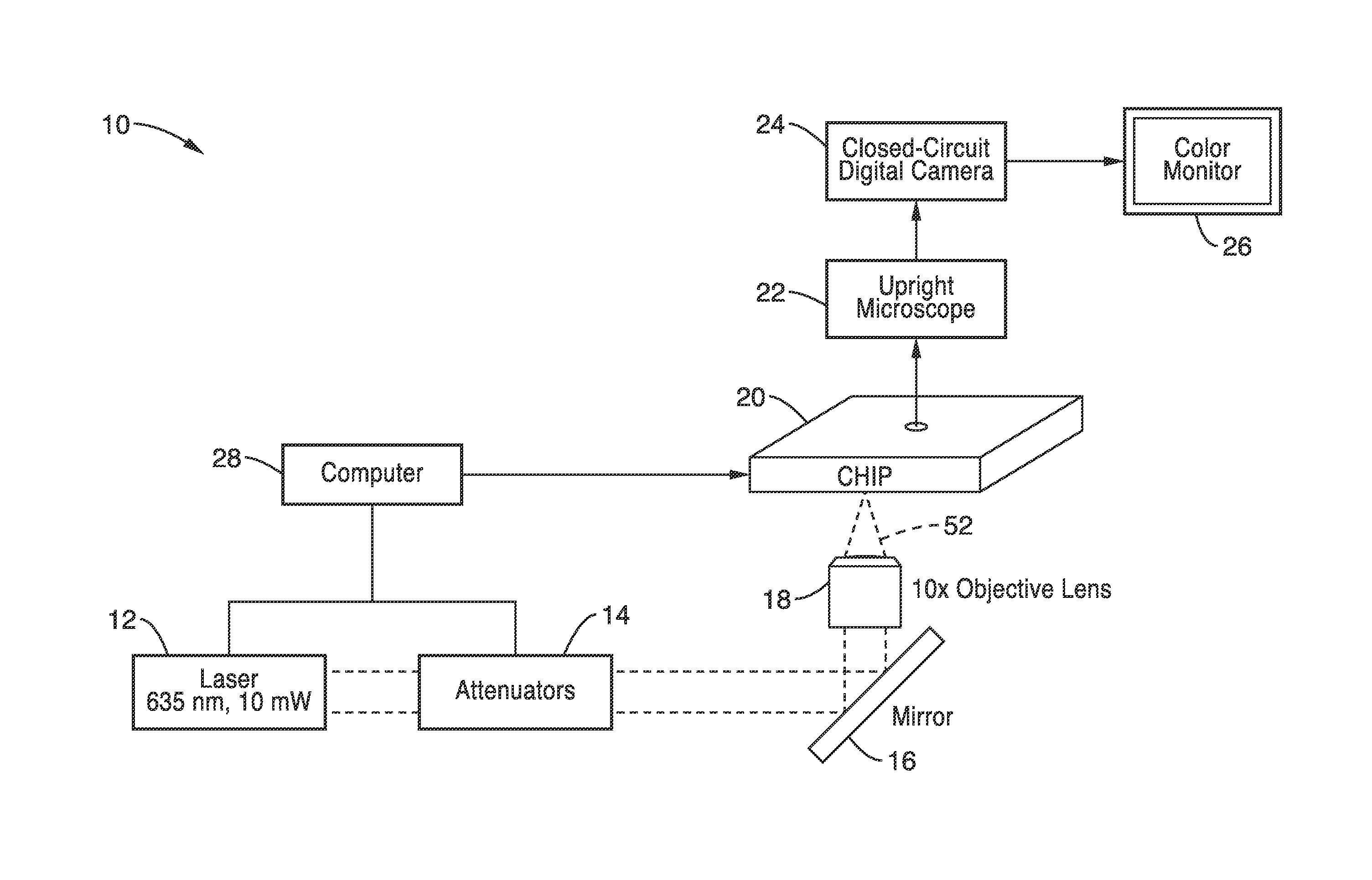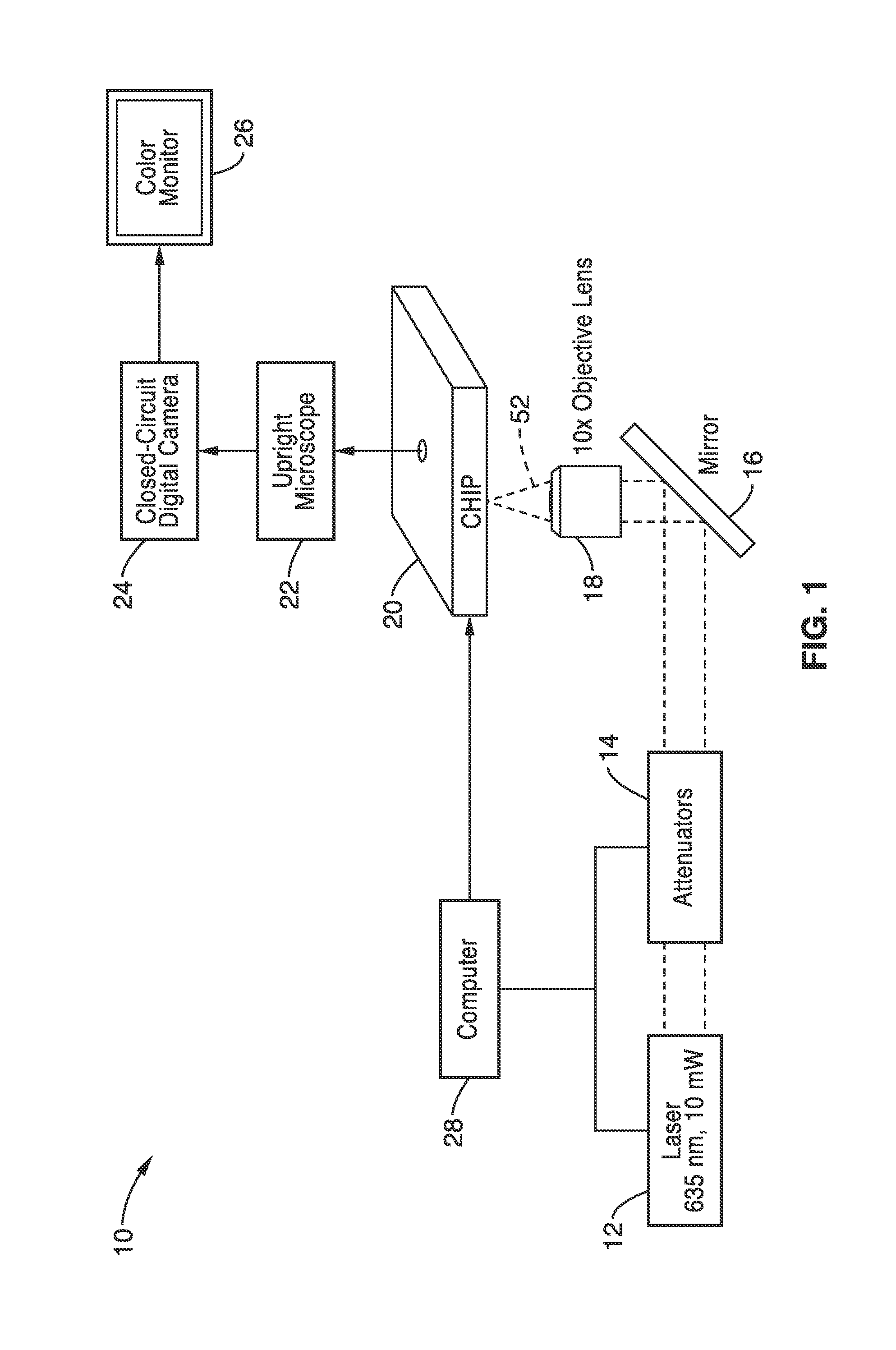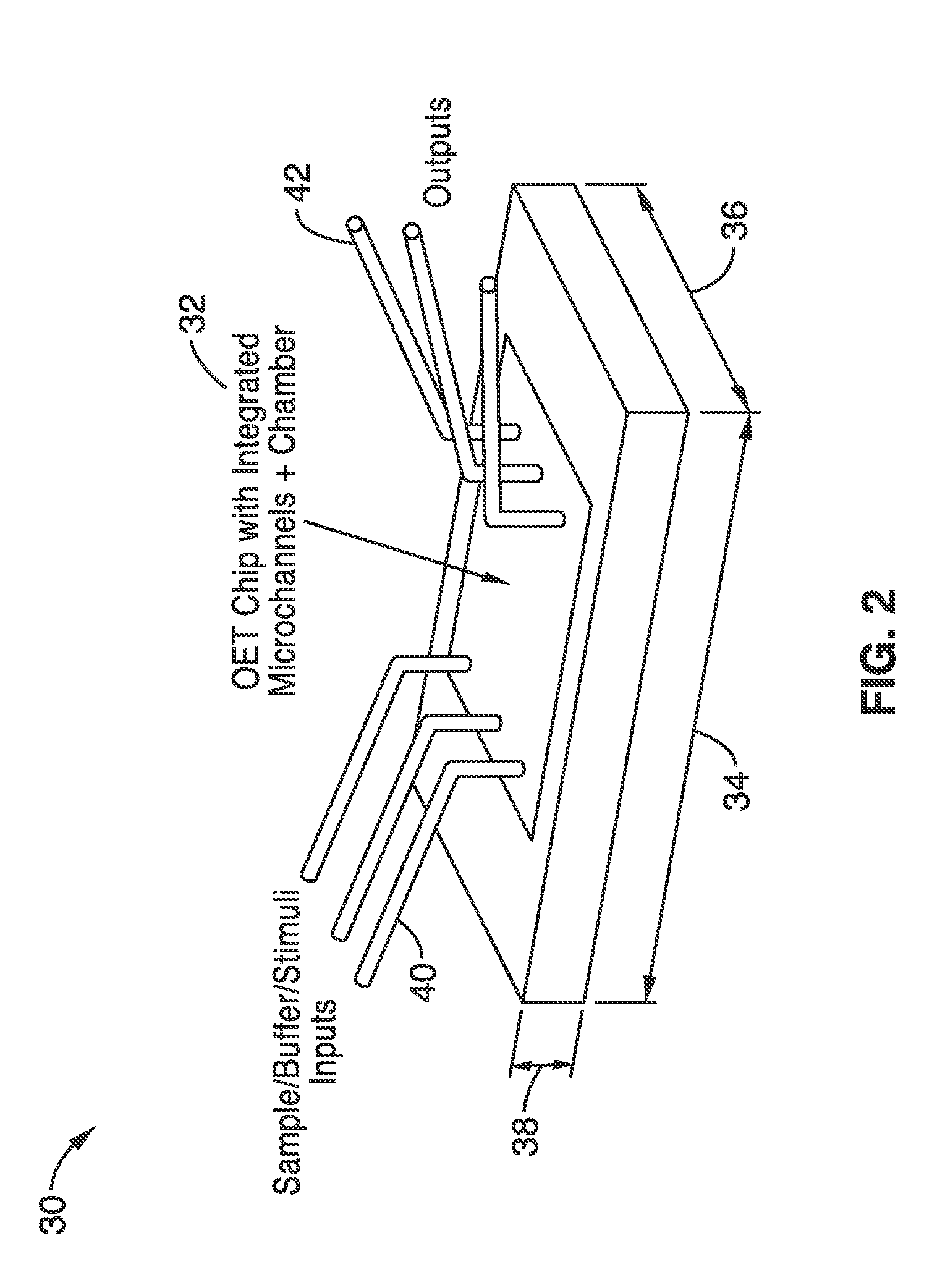Methods and devices for sorting cells and other biological particulates
a technology of biological particulates and cells, applied in the direction of electrostatic separators, diaphragms, electrolysis, etc., can solve the problems of inability to use the same sperm that has been sorted, inability to accurately discriminate viable cells, and inability to accept the risk of genetic damage, so as to achieve accurate and systematic assessment of the morphological state of the embryo, the effect of accurately identifying viable cells
- Summary
- Abstract
- Description
- Claims
- Application Information
AI Technical Summary
Benefits of technology
Problems solved by technology
Method used
Image
Examples
example 1
[0119]Using a hybrid inbred mouse model and the OET apparatus, in a 2-phase blinded study, it was first determined how embryos that were cultured in an optimized culture medium (KSOM+AA) responded to OET-DEP at varying stages of development (1-cell, 2-cell, 4-to-16-cell / morula, and, early and late blastocyst stages). Next, to assess whether this technique could be used to guide embryo selection, responses from embryos cultured in KSOM+AA were compared with morphologically identical embryos cultured in a sub-optimal medium (M16). In-vitro culture in M16 yields, at all pre-implantation stages of development, a subset of embryos that are indistinguishable from ones cultured in KSOM+AA. However, M16 has been shown to sub-optimally sustain in-vitro embryo development, as compared to KSOM+AA, at all stages of development. This difference in quality between the two media is magnified as cultured embryos progress to later stages of development in-vitro. Finally, as a preliminary effort to a...
example 2
[0132]A second illustration of the functionality of OET-DEP devices and methods is shown with the separation of viable motile and non-motile sperm from non-viable sperm. The use of intracytoplasmic sperm injection (ICSI) in combination with in vitro fertilization is increasingly used in cases of male-factor infertility. In this procedure, fertilization is achieved by injecting a single sperm directly into the oocyte (egg). Since the introduction of ICSI in 1992, this procedure has rapidly gained acceptance, and now accounts for approximately 3% of U.S. births. A major concern related to ICSI is sperm selection, because the quality of the individual sperm that ultimately fertilizes the oocyte is essential to the success of the procedure. Selection of non-viable sperm, for example, will not result in fertilization or will produce an embryo that will ultimately be non-viable and a valuable oocyte is wasted.
[0133]The selection of viable sperm for ICSI is challenging, and generally sperm...
PUM
 Login to View More
Login to View More Abstract
Description
Claims
Application Information
 Login to View More
Login to View More - R&D
- Intellectual Property
- Life Sciences
- Materials
- Tech Scout
- Unparalleled Data Quality
- Higher Quality Content
- 60% Fewer Hallucinations
Browse by: Latest US Patents, China's latest patents, Technical Efficacy Thesaurus, Application Domain, Technology Topic, Popular Technical Reports.
© 2025 PatSnap. All rights reserved.Legal|Privacy policy|Modern Slavery Act Transparency Statement|Sitemap|About US| Contact US: help@patsnap.com



